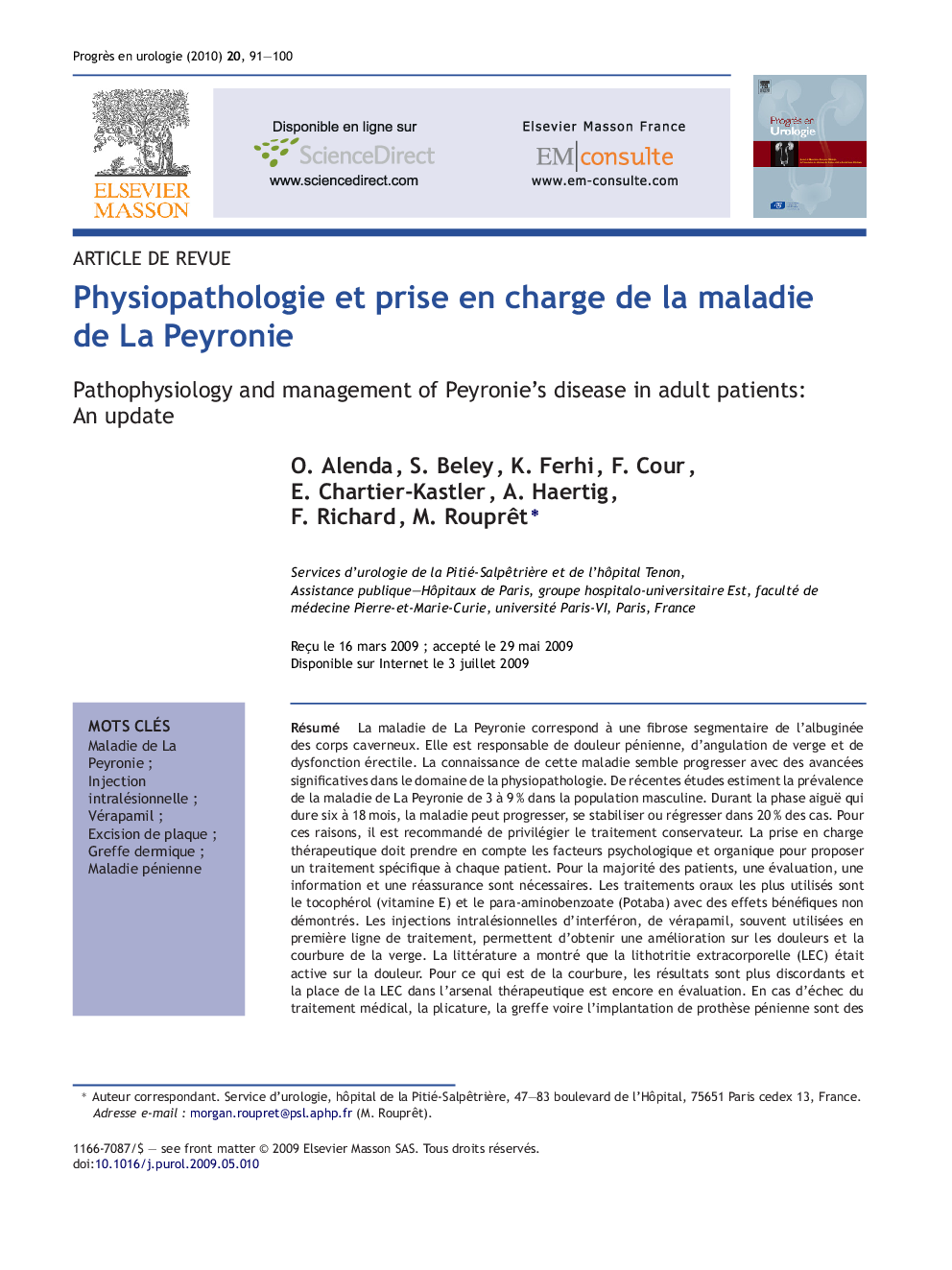| Article ID | Journal | Published Year | Pages | File Type |
|---|---|---|---|---|
| 3825872 | Progrès en Urologie | 2010 | 10 Pages |
Abstract
Peyronie's disease (PD) is due to a fibrotic plaque forms in the tunica albuginea layer of the penis. It is responsible of penile pain, angulation, and erectile dysfunction. Even though the aetiology remains unknown, the knowledge of the pathophysiology has evolved in recent years. Recent studies indicate that PD has prevalence of 3 to 9% in adult men. During the initial acute phase (6 to 18Â months), the condition may progress, stabilize or regress in 20%. Therefore, a conservative treatment approach has been advocated. An initial discussion about evaluation, information, and reassurance is necessary in most cases. The most commonly employed oral therapies include tocopherol (vitamin E), and para-aminobenzoate (Potaba), which have failed to demonstrate efficiency. Intralesional injection therapies with interferon alpha-2B, verapamil are frequently used as a first-line treatment modality, and can provide an improvement in decreasing penile pain and penile curvature. Current literature has shown that extracorporeal shock wave lithotripsy was only active on the pain. Regarding penile curvature, there are discrepancies in the published series. The surgical approach is restricted to men unresponsive to nonoperative therapies (i.e., 10% of patients). In such cases, plication, grafting or even penile prosthesis implantation are conceivable management options.
Related Topics
Health Sciences
Medicine and Dentistry
Medicine and Dentistry (General)
Authors
O. Alenda, S. Beley, K. Ferhi, F. Cour, E. Chartier-Kastler, A. Haertig, F. Richard, M. Rouprêt,
